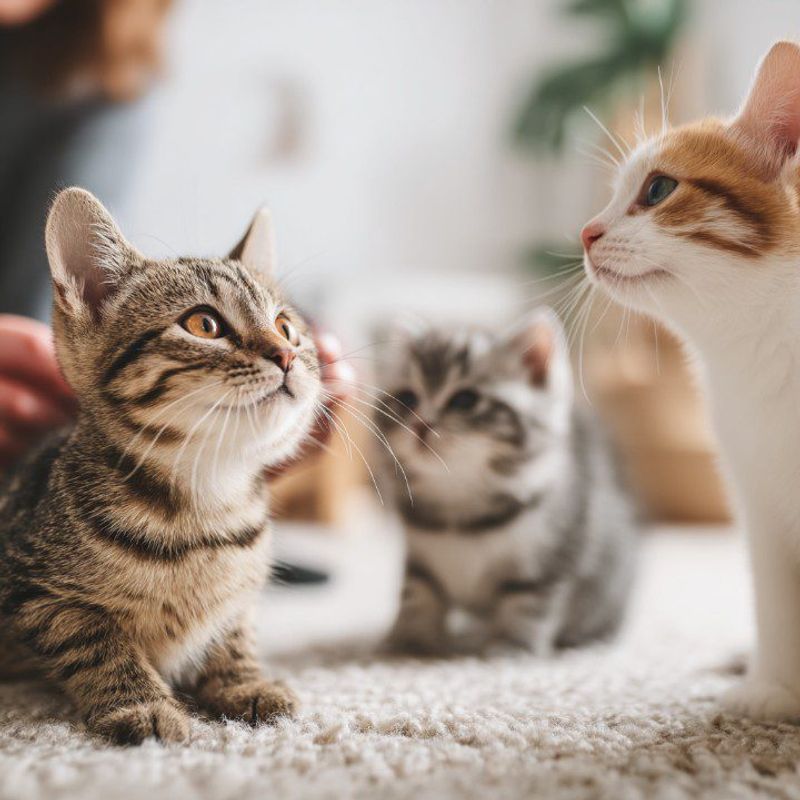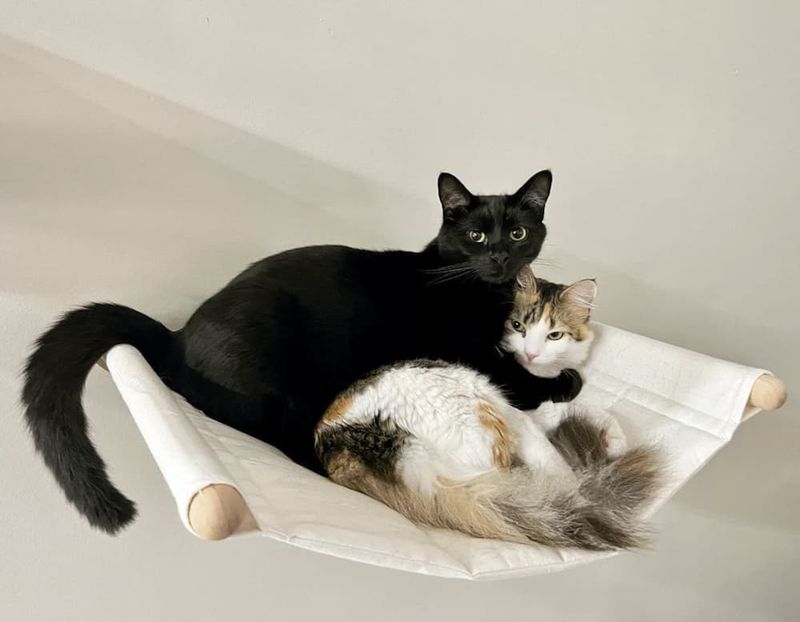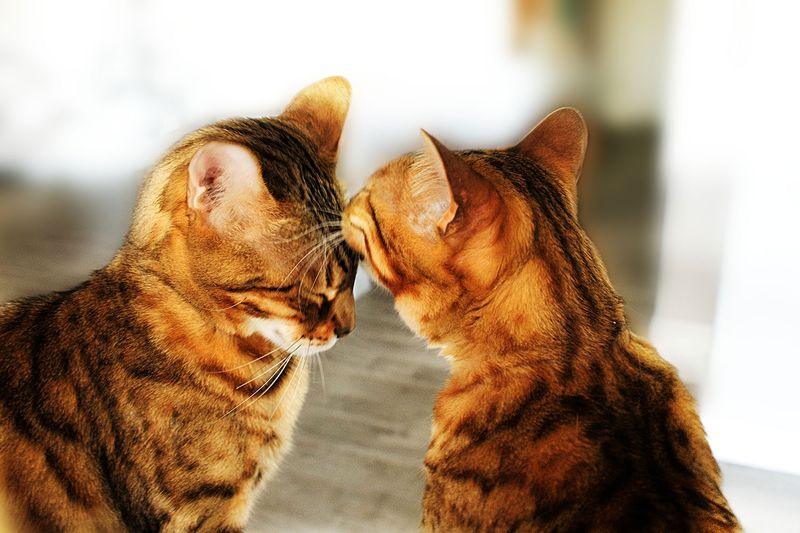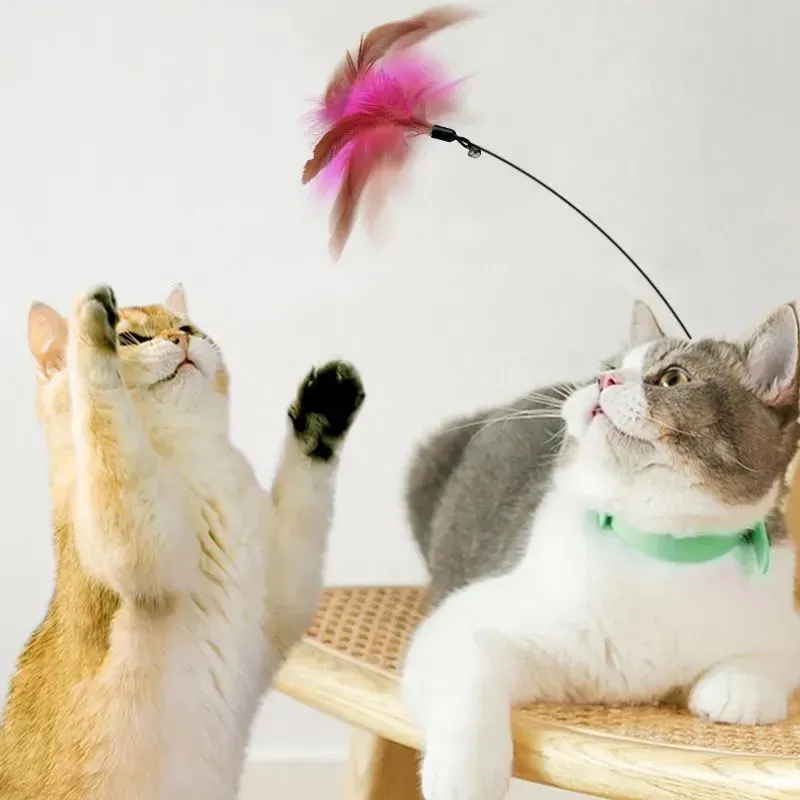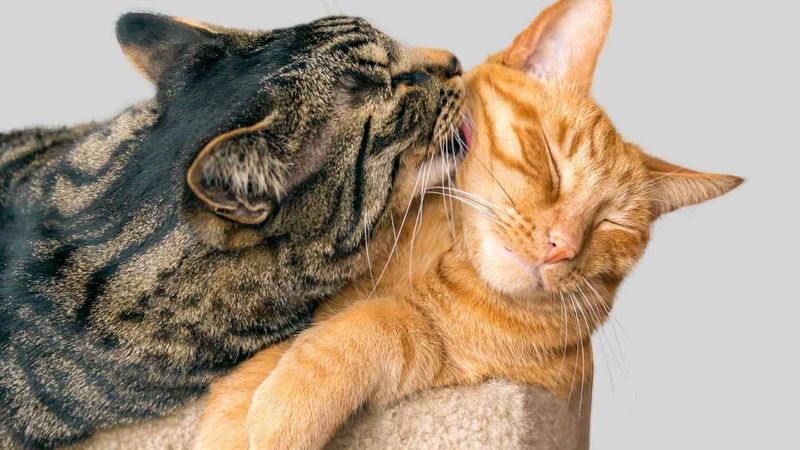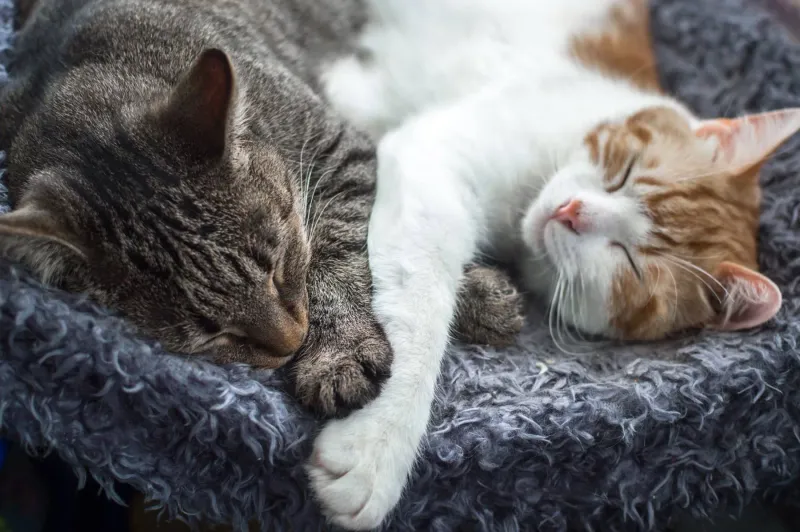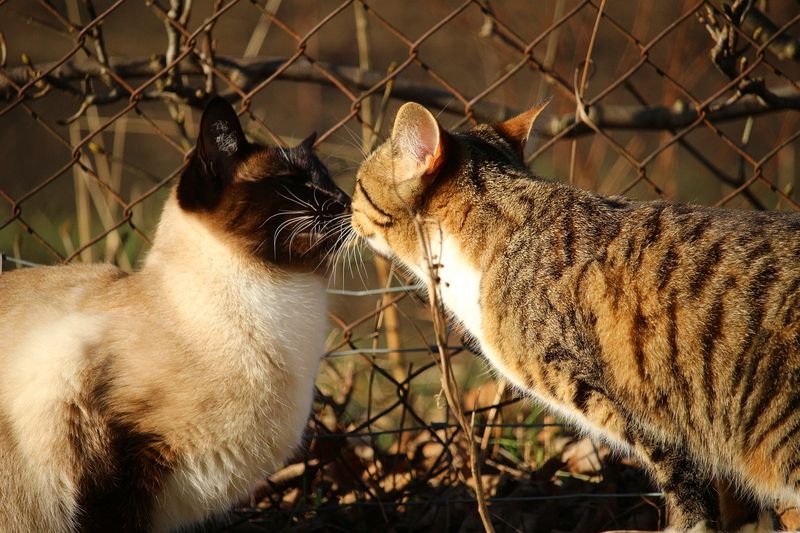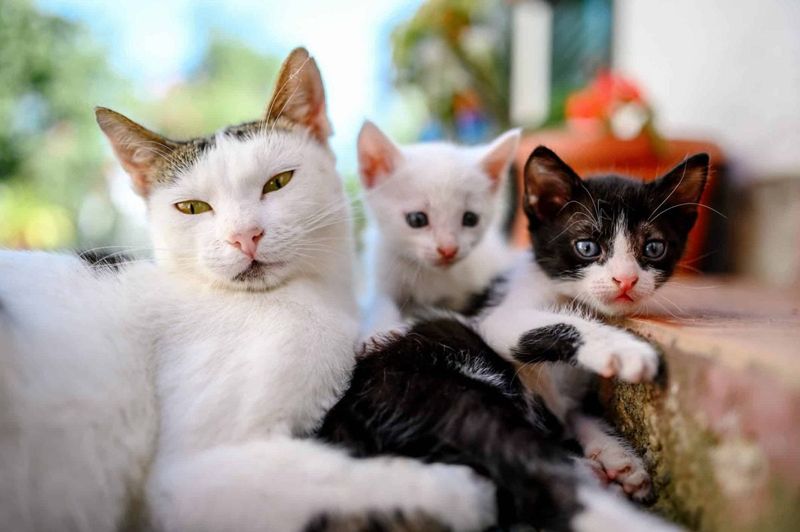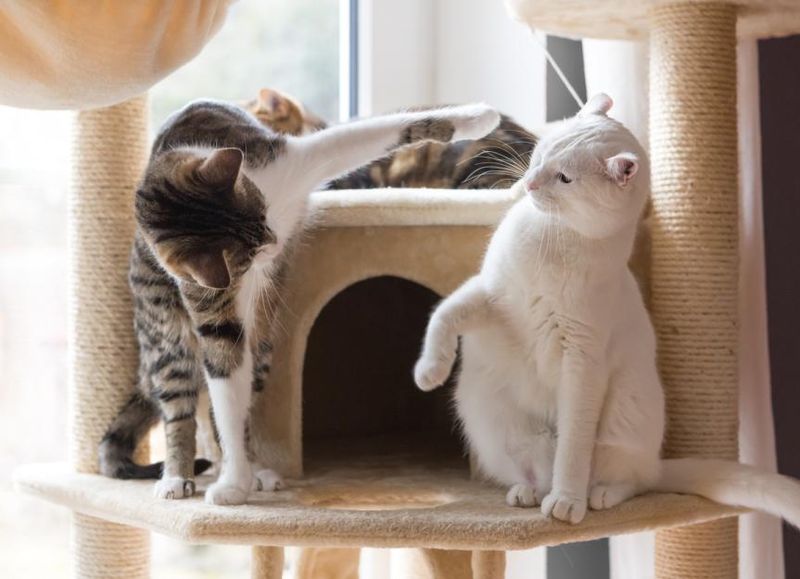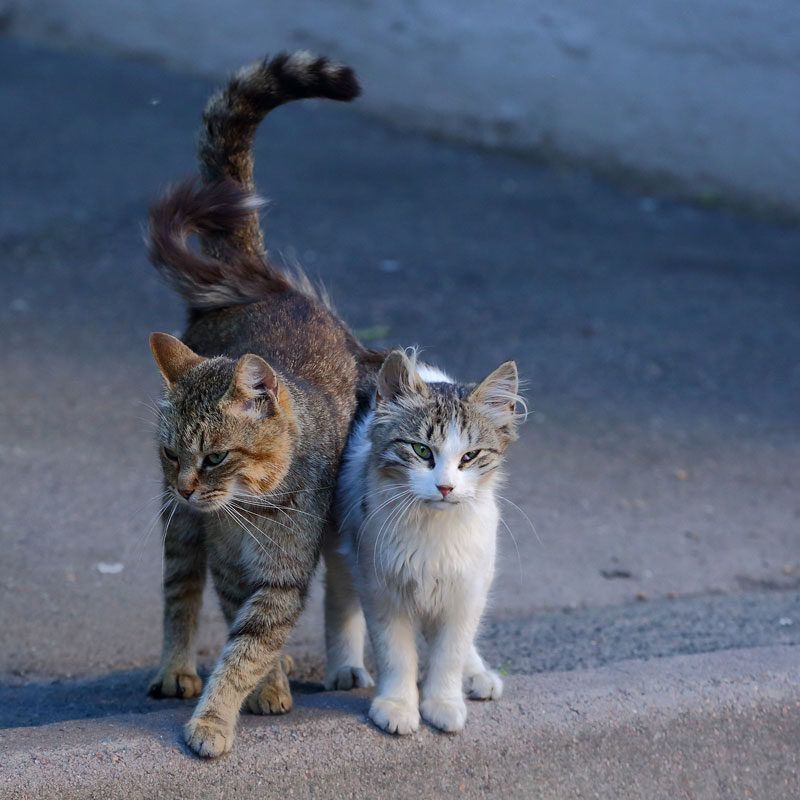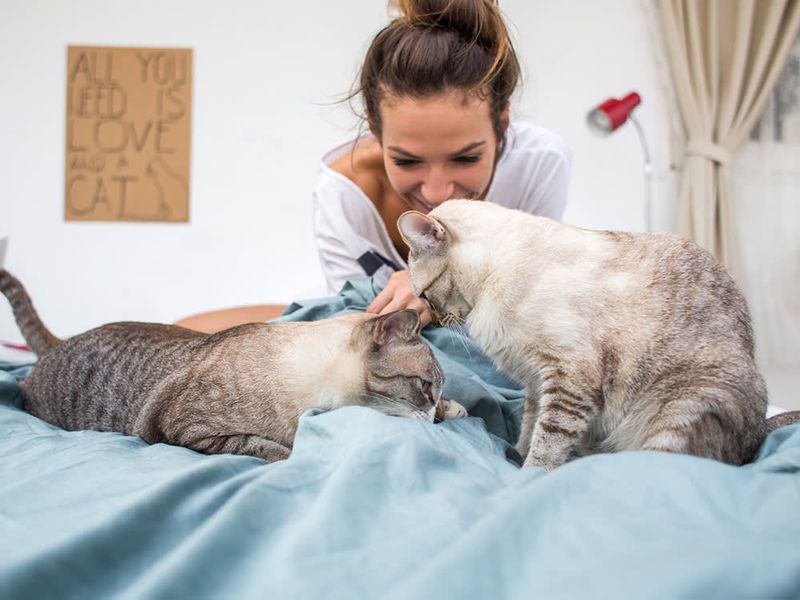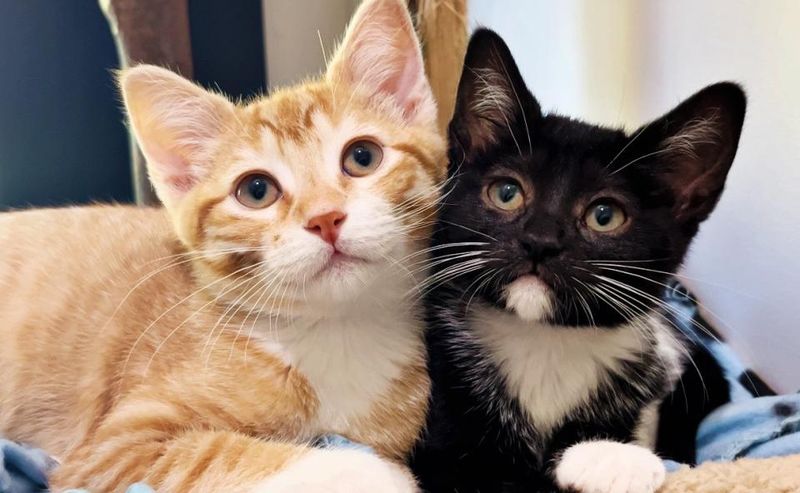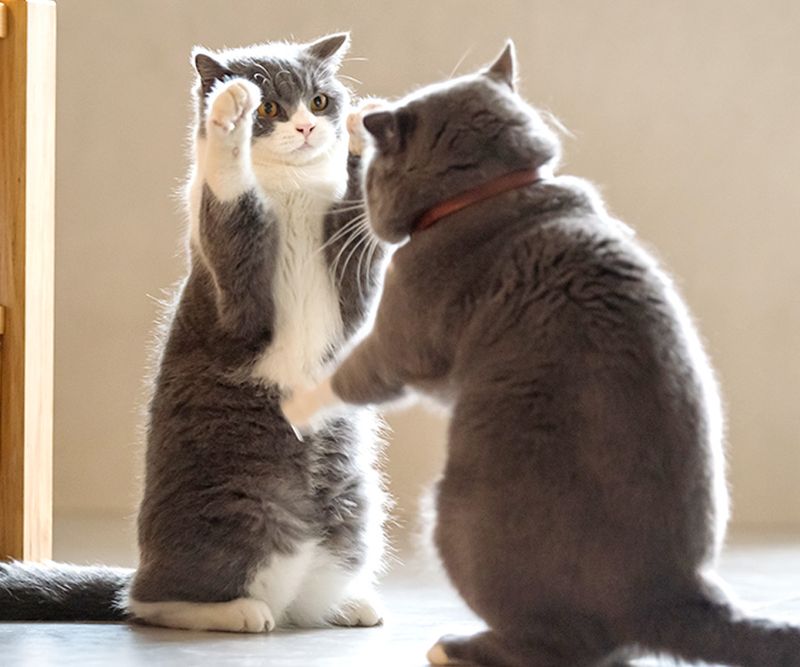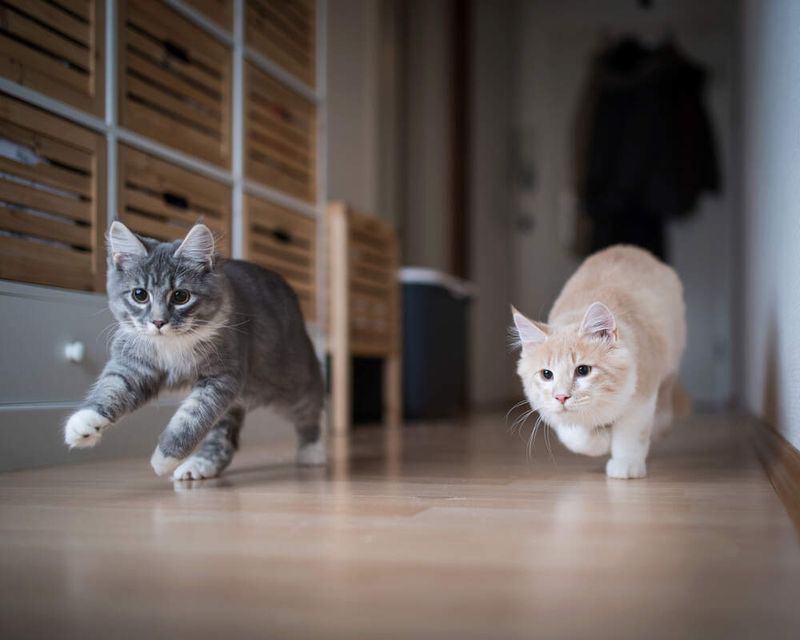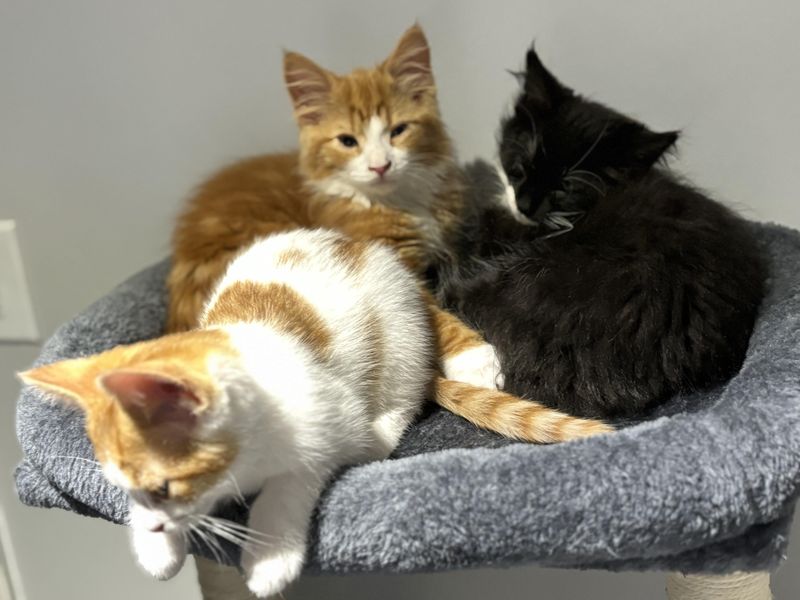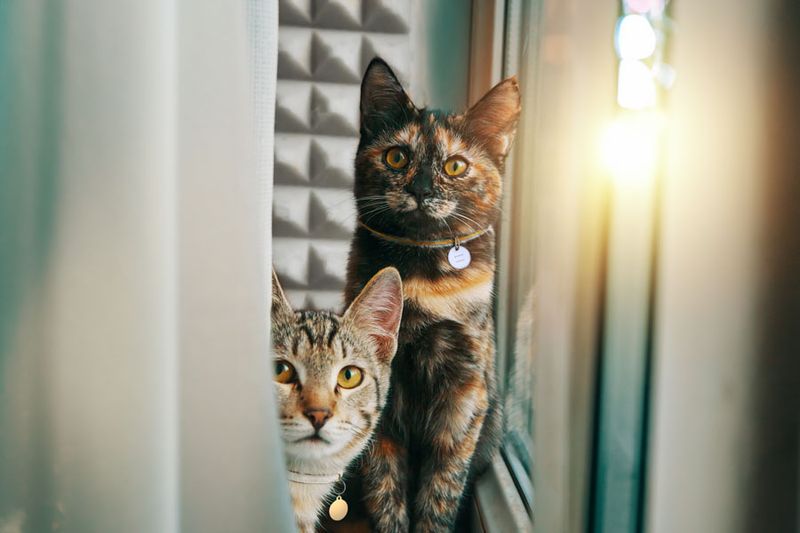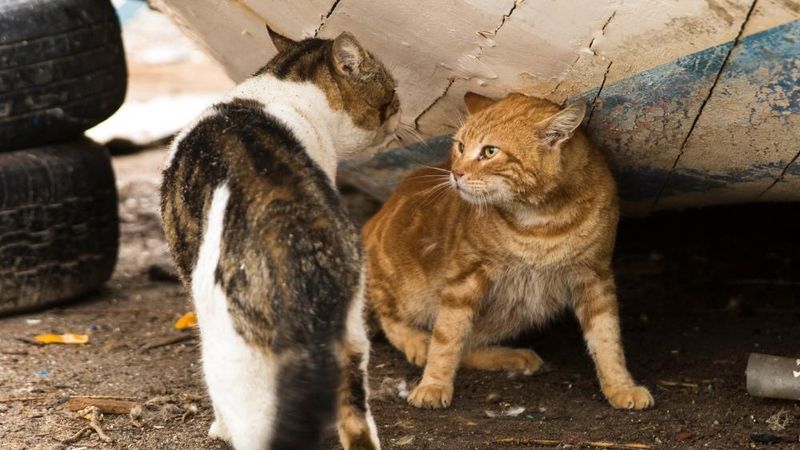📖 Table of Content:
- 1. Constant Entertainment
- 2. Built-in Companionship
- 3. Reduced Anxiety
- 4. Better Social Skills
- 5. Weight Management Help
- 6. Shared Grooming
- 7. Easier Transitions
- 8. Complementary Personalities
- 9. Learning Opportunities
- 10. Shared Resources
- 11. Pest Control Team
- 12. Emotional Support Network
- 1. Cost Increases
- 2. Space Requirements
- 3. Social Tensions
- 4. Cleaning Challenges
- 5. Travel Complications
- 6. Health Transmission Concerns
Cats provide loving companionship and enrich the home environment in many ways. The idea of adding a second or third feline often appeals to those who already enjoy the company of one cat. Bringing multiple cats together can create a dynamic and lively household atmosphere.
Having more than one cat changes the way pets interact, often leading to new and unexpected behaviors. Social dynamics among cats can influence how they play, rest, and seek attention. Understanding these interactions helps prepare for the realities of a multi-cat home.
While the joys of sharing your life with multiple cats are many, challenges can arise as well. Space, resources, and individual personalities all play important roles in harmony. Being aware of both the benefits and obstacles ensures a more fulfilling experience for both pets and owners.
1. Constant Entertainment
Cats playing together create an endless source of amusement. They chase each other through the house, wrestle on the floor, and engage in synchronized window watching that will have you laughing daily.
Multi-cat households rarely experience dull moments. Your feline friends will invent games, take turns being the hunter and the hunted, and sometimes team up for mischievous adventures.
The entertainment value alone makes having multiple cats worthwhile, especially during those long work-from-home days when you need a quick mental break. Their antics provide better stress relief than many TV shows!
2. Built-in Companionship
Though often seen as independent, cats are naturally social animals. In a multi-cat household, they keep each other company during the long stretches when humans are absent.
No more guilt about leaving a single cat alone while you’re at work! Your feline friends can cuddle together, groom each other, and engage in play throughout the day.
This built-in buddy system helps prevent loneliness and boredom, which can lead to behavioral problems in solo cats. Many multi-cat owners report returning home to find their pets peacefully napping together, proof of their special bond.
3. Reduced Anxiety
Having feline companions can help cats feel calmer and less anxious. The support of their social group provides comfort during stressful times such as thunderstorms or home repairs.
When one cat feels nervous, the calm demeanor of another can have a settling effect. This emotional support system works both ways – cats take turns being the comforter and the comforted.
Many veterinarians recommend adding a second cat specifically for anxious pets. The predictable routine of having a consistent companion helps create a stable environment, reducing stress-related behaviors like excessive grooming or hiding.
4. Better Social Skills
Living alongside other cats helps felines hone their social abilities. They learn important lessons in play boundaries, manners, and effective communication with fellow animals.
These enhanced social abilities often transfer to human interactions, too. Multi-cat households frequently report their pets are more adaptable when visitors come over or when facing new situations.
Kittens raised with older cats particularly benefit from this social education. The older cats teach the youngsters important lessons about appropriate behavior, hunting techniques, and even litter box habits that would otherwise fall entirely to human caregivers.
5. Weight Management Help
Multiple cats naturally encourage more physical activity through play and friendly competition. This increased movement helps maintain healthy weights and prevents obesity-related health problems.
Cats with companions engage in chasing, wrestling, and climbing much more frequently than solo cats. Even lazy cats will join the fun when enticed by an energetic friend.
The physical benefits extend beyond weight control to improved muscle tone, better cardiovascular health, and enhanced flexibility. Many veterinarians note that multi-cat households often have pets with fewer weight-related health issues, saving on potential medical costs down the road.
6. Shared Grooming
Mutual grooming, or allogrooming, is a common way cats show affection and care. This behavior helps them keep clean in places they can’t easily reach themselves.
Beyond the practical cleaning benefits, allogrooming strengthens social bonds between cats. The behavior releases endorphins that create feelings of pleasure and relaxation for both the groomer and the groomed.
Cat owners often notice less shedding throughout the house when multiple cats engage in regular grooming sessions. While you’ll still need to brush your cats, their teamwork helps maintain cleaner coats between grooming sessions, reducing hairballs and skin problems.
7. Easier Transitions
Having multiple cats makes life changes less stressful for everyone. Moving to a new home, welcoming a baby, or adjusting to a new work schedule becomes easier when cats have each other for support and consistency.
During major life transitions, cats can maintain their social routines with each other even as other aspects of their environment change. This familiar relationship provides stability when everything else feels different.
Many cat owners report that their pets adjust more quickly to new circumstances when they have feline companions. The presence of a trusted cat friend creates a sense of normalcy that helps them adapt to changes with less anxiety and behavioral problems.
8. Complementary Personalities
Each cat brings unique personality traits that create a balanced household dynamic. An energetic cat might bring out the playful side of a normally reserved companion, while a calm cat can help soothe an anxious housemate.
These complementary relationships benefit humans too. One cat might prefer cuddling while another enjoys interactive play, satisfying different needs for affection and entertainment.
Cat owners often discover that their pets naturally divide household responsibilities. One might take on the role of greeter when visitors arrive, while another serves as the dedicated lap warmer during movie nights, creating a harmonious division of feline labor that enhances the home environment.
9. Learning Opportunities
The dynamics between several cats offer rich insights into their social communication. Owners can learn about delicate body language, vocal tones, and hierarchy that single-cat environments don’t reveal.
Children especially benefit from observing these natural feline dynamics. They learn valuable lessons about friendship, conflict resolution, and respecting boundaries by watching how cats navigate their relationships.
The learning goes both ways—cats in multi-cat homes develop higher emotional intelligence. They become skilled at reading each other’s signals and adapting their behavior accordingly, creating a sophisticated social network that showcases their remarkable adaptability and intelligence.
10. Shared Resources
Having several cats under one roof creates savings by allowing shared use of items like scratching posts and toys. This lowers the cost per cat compared to maintaining similar quality for cats living separately.
Heating benefits appear during colder months when cats cuddle together. Their shared body heat means they stay warmer while using less of your home’s heating resources.
Time efficiency improves too—playing with multiple cats simultaneously provides more total interaction with less human time investment. Many multi-cat owners report that fifteen minutes of interactive playtime satisfies two or three cats, where each would need that much individual attention if living alone.
11. Pest Control Team
A household with several cats gains a skilled pest-fighting squad. Different cats tend to target different types of insects and rodents, offering broad coverage against intruders.
The mere presence of several cats serves as a powerful deterrent. Mice and other small pests can detect the scent markers of multiple predators and will typically avoid these well-guarded territories.
Working as a team enhances their effectiveness. One cat might flush out a hiding pest while another waits to pounce, demonstrating impressive coordination. Many rural homeowners maintain multiple barn cats specifically for this natural and chemical-free pest management approach.
12. Emotional Support Network
Multiple cats create a powerful emotional support system for their human companions. Each cat offers a different type of comfort – one might excel at detecting your sadness while another specializes in playful distraction from stress.
During difficult life events like illness or grief, having several cats ensures continuous companionship. When one cat needs personal space, another can step in to provide the purring therapy you need.
Research suggests that interacting with pets reduces cortisol levels and increases oxytocin production. With multiple cats, these beneficial hormonal effects multiply, creating a home environment that naturally promotes emotional wellbeing and resilience during challenging times.
1. Cost Increases
The financial reality of multiple cats hits the wallet hard. Veterinary expenses multiply with each additional cat, including routine checkups, vaccinations, and unexpected medical emergencies that can occur simultaneously.
Food costs climb significantly, especially if any cats require prescription diets. The litter budget expands dramatically too – multiple cats mean more frequent box changes and higher monthly supply needs.
Insurance premiums stack up for those who wisely protect against catastrophic vet bills. Even with economies of scale on some supplies, most multi-cat households report spending at least 80% more per additional cat than they anticipated, making financial planning crucial before expanding your feline family.
2. Space Requirements
For multiple cats to live harmoniously, a generous territory is essential. Personal spaces for sleeping, dining, and solitude are necessary for each cat, often challenging in compact homes.
Vertical space becomes essential with multiple cats. Cat trees, shelves, and perches must be abundant enough that resource guarding doesn’t occur, often transforming home décor dramatically.
Litter box management presents a particular spatial challenge. The general rule of one box per cat plus one extra means a three-cat household needs four litter boxes placed in different locations. This spatial requirement often forces creative solutions in apartments or smaller homes where every square foot counts.
3. Social Tensions
Not all cats naturally become best friends. Territorial disputes can erupt even years after cats have lived together peacefully, triggered by factors like a stressful event or one cat reaching social maturity.
Redirected aggression creates particularly challenging situations. When one cat becomes agitated by something outside (like a neighborhood cat), it may attack its housemate instead, creating a cycle of fear and aggression difficult to break.
Resource guarding frequently emerges in multi-cat households. Favorite sleeping spots, toys, or even human attention become contested resources requiring careful management. Many owners report needing to implement sophisticated feeding stations and scheduled attention time to maintain household harmony.
4. Cleaning Challenges
The cleaning workload multiplies exponentially with each additional cat. Hair accumulates at astonishing rates, covering furniture, clothing, and somehow finding its way into sealed food containers despite your best efforts.
Litter box maintenance becomes a significant daily chore. Multiple boxes require frequent scooping to prevent avoidance behaviors that lead to inappropriate elimination around the house.
Occasional accidents happen more frequently with multiple cats, especially during periods of social tension. Enzymatic cleaners become household staples, and some multi-cat owners find themselves replacing carpeting more frequently. Even with diligent cleaning, many notice that visitors who don’t have cats can immediately detect the subtle scent of a multi-cat household.
5. Travel Complications
Traveling becomes significantly more complicated with multiple cats. Finding cat sitters willing to manage several felines with potentially different care needs presents the first hurdle, often limiting vacation options.
Boarding costs multiply quickly, making even short trips expensive. Quality facilities that accommodate multiple cats from the same household often charge premium rates for the extra space and attention required.
Taking cats along creates logistical nightmares. Transportation requires multiple carriers, hotel options become severely limited, and the stress of travel often triggers behavioral issues that don’t appear in familiar environments. Many multi-cat owners report dramatically changing their travel patterns after adopting additional cats.
6. Health Transmission Concerns
Contagious feline health issues spread rapidly in multi-cat households. Upper respiratory infections can cycle through all cats repeatedly, creating an ongoing battle with sneezing, congestion, and vet visits.
Parasites present particular challenges in homes with several cats. One cat with fleas or ringworm quickly infects the others, multiplying treatment costs and extending recovery time as reinfection occurs between cats.
Stress-related health problems increase in some multi-cat environments. Conditions like feline idiopathic cystitis, overgrooming, and stress-induced digestive issues appear more frequently when cats experience social tension. Veterinarians often recommend pheromone diffusers, separate resources, and sometimes even behavioral medication to manage these interconnected health challenges.

